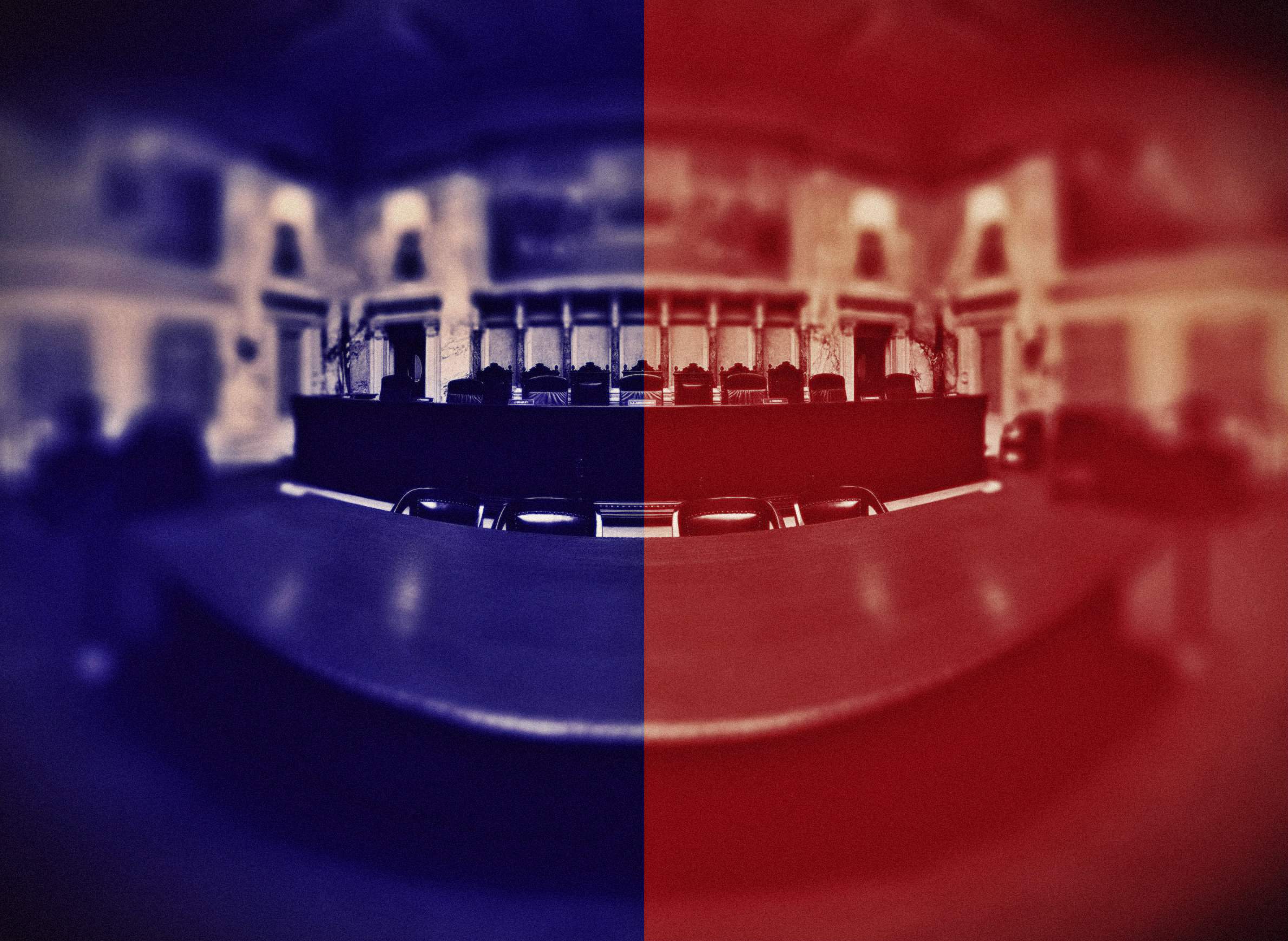
Votes In 2018 Wisconsin Supreme Court Race Were Most Partisan In Two Decades

The victory by Rebecca Dallet over Michael Screnock in the Wisconsin Supreme Court election on April 3, 2018 capped off a particularly partisan campaign for what is officially a non-partisan seat. Though the outcome wasn't particularly close — Dallet won by a margin of 56 to 44 percent over Screnock — the ballots cast across the state reflected an ongoing partisan voting trend in Wisconsin Supreme Court elections.
Partisanship among voters was in evidence in this race's primary, held on Feb. 20. Examining the relationship between the 2016 presidential vote and the state Supreme Court vote in Wisconsin's 72 counties, there was indeed a connection. Presidential vote results are an aggregate measure of partisanship commonly used by political scientists.
It turns out that during the primary election, there was a very strong relationship between the 2016 presidential vote and support for Supreme Court justice across Wisconsin's 72 counties. The more a county’s voters supported Republican presidential candidate Donald Trump in the 2016 election, the more likely they were to support Screnock, the conservative court candidate. Conversely, as the liberal court candidate, Dallet tended to do well in places where Democratic presidential candidate Hillary Clinton performed well.
Partisanship was certainly present during the primary campaigns. In fact, national politicians and other partisan figures were mentioned in candidate speeches and campaign advertisements.
In the run up to officially non-partisan the April 3 election, partisanship continued to be on full display. Dallet received endorsements from former Vice President Joe Biden, U.S. Senator Cory Booker, D-New Jersey, and former U.S. Representative Gabrielle Giffords (a Democrat from Arizona). Eric Holder, the former U.S. Attorney General who served in the Obama administration, likewise endorsed and also campaigned for Dallet on behalf of the National Democratic Redistricting Committee. In terms of support for Screnock, the National Rifle Association Political Victory Fund, a political action committee, endorsed his candidacy.
It wasn't just endorsements, though. Political parties and ideological groups were involved in the race in a variety of ways. For example, the Republican Party of Wisconsin paid for direct mail that featured a picture of Screnock and Gov. Scott Walker, who has high approval ratings among conservatives. Wisconsin Manufacturers & Commerce, a conservative trade association that regularly promotes Republican candidates, ran an anti-Dallet add that ended up attracting controversy. And a group called For Wisconsin's Future, a state affiliate of a union-backed national political action committee that supports Democrats, created Facebook advertisements in support of Dallet, including one that described Screnock as "a rubber stamp for Scott Walker's divisive agenda."
Did partisanship play a similar role in the general election as it did in the primary?
In the primary election, the correlation between the county-level presidential vote in 2016 and the county-level state Supreme Court vote was .81, a very high level. (The maximum possible correlation value is 1, while the minimum is 0, which would indicate no relationship between measures).
The following chart displays the relationship between President Trump's share of the two-party vote in the Nov. 8, 2016 general election and the share of the vote garnered by Screnock on the April 3, 2018.
As was the case in the primary election, there is a strong, positive relationship between the 2016 county-level presidential vote and the 2018 state Supreme Court vote. As county-level support for Trump increases, so does support for Screnock. The correlation between the two measures is .89. That value indicates that there was an even stronger connection between the county-level presidential and Supreme Court vote in the general election than in the primary.
It is important to note that even though overall vote shares were different in the primary compared to the general election, it is entirely possible for partisanship to play a more pronounced role in the latter. Indeed, it is critical to look below the surface of election outcomes (for example, at county-level results) in order to better understand the political forces that are at play.
To provide additional historical context, the average correlation between the county-level vote for the 10 Wisconsin Supreme Court elections held between 1997 to 2016 and the preceding presidential election for each can be calculated. During that period, the average correlation between the two measures was .67. That number indicates that over the past 20 years, there has been a fairly strong connection between the presidential and state Supreme Court vote in Wisconsin.
However, voting patterns the 2018 spring general election was more partisan than any of the Wisconsin Supreme Court elections since the late 1990s. When its outcome became clear after polls closed on April 3, official statements and social media posts by voters and elected officials seemed to confirm that finding. Dallet supporters rejoiced her victory and pointed to it as a sign of what they're hoping will be a wave of victories by Democratic candidates in the fall general election. Meanwhile, Walker posted tweets decrying that prospect of a #BlueWave in November. Wisconsin is well into a new era of judicial elections — one where partisanship plays an enormous role in vote choice.
Aaron Weinschenk is a an associate professor of political science at the University of Wisconsin-Green Bay.


